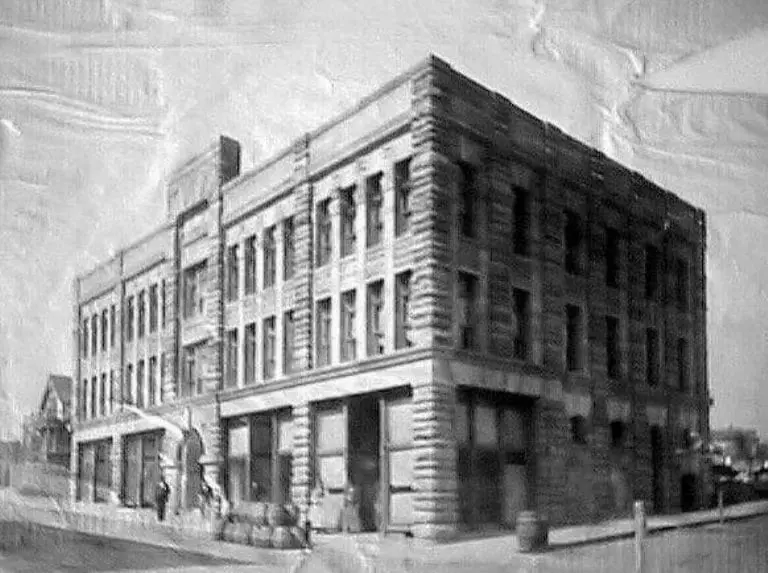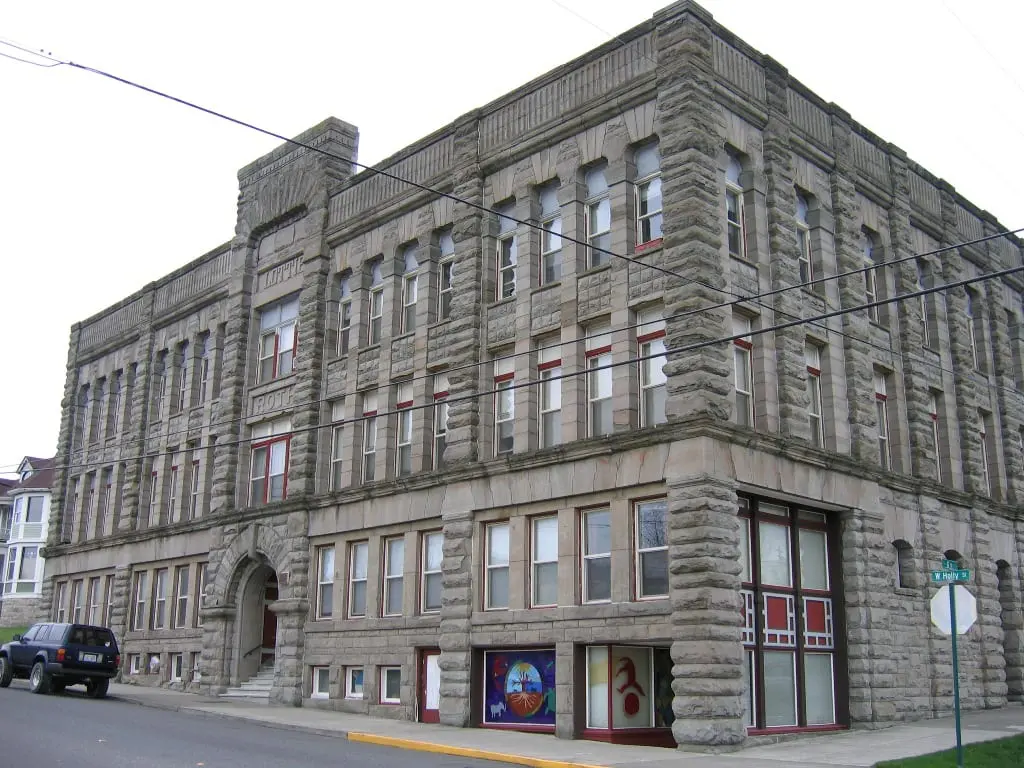
Co-owner of the Bellingham Bay Quarry, Charles I. Roth, son-in-law to Henry Roeder, supplied much of the burned down Seattle with Chuckanut sandstone in 1889. Roth was tremendously impressed by the round-arched and sandstone-faced designs architect Elmer H. Fisher was building in Seattle’s Pioneer Square area. The famous eastern architect, Henry Hobson Richardson, for whom the architectural style Richardsonian Romanesque is named, inspired Fisher’s work. Roth was inspired to showcase his sandstone quarry product in this style with a large block building in Bellingham.
The building constructed in 1890 was named The Lottie Roth Block after Charles’ wife. The south and east exterior walls are constructed of Chuckanut sandstone, the north and west walls are brick, and the interior is wood. Upon the building’s completion a bank occupied the first floor, while the top two floors were rented as office space.
In February 1891 the two towns of Whatcom and New Whatcom merged, shifting the location of new construction from the west of Whatcom Creek to the east. By 1895, the Lottie Roth Block was isolated from the developing downtown area. Following the bank’s vacation of the first floor in 1896 the Imperial City News moved in. The newspaper failed soon afterward, and the building then became the Chuckanut Hotel. The Lottie Roth Block became apartments in 1918, and it continues that use today.

Of the numerous other Richardsonian Romanesque buildings with Chuckanut Sandstone exteriors that were built, the Lottie Roth Block is the all that is left in Bellingham. Fire and demolition has taken down the Pike Block, Sunset Block, Lighthouse Block and the old G Street courthouse. In the end, the Lottie Roth Block’s location away from the center of the city proved beneficial to its survival.
The list of changes made to this building are few, and include, creating more apartment units by diving the high ceilings, which required replacing the first floors large plate glass windows. An interior feature of interest is the remarkable original woodwork of the banisters and railings that are highlighted by three large skylights.
